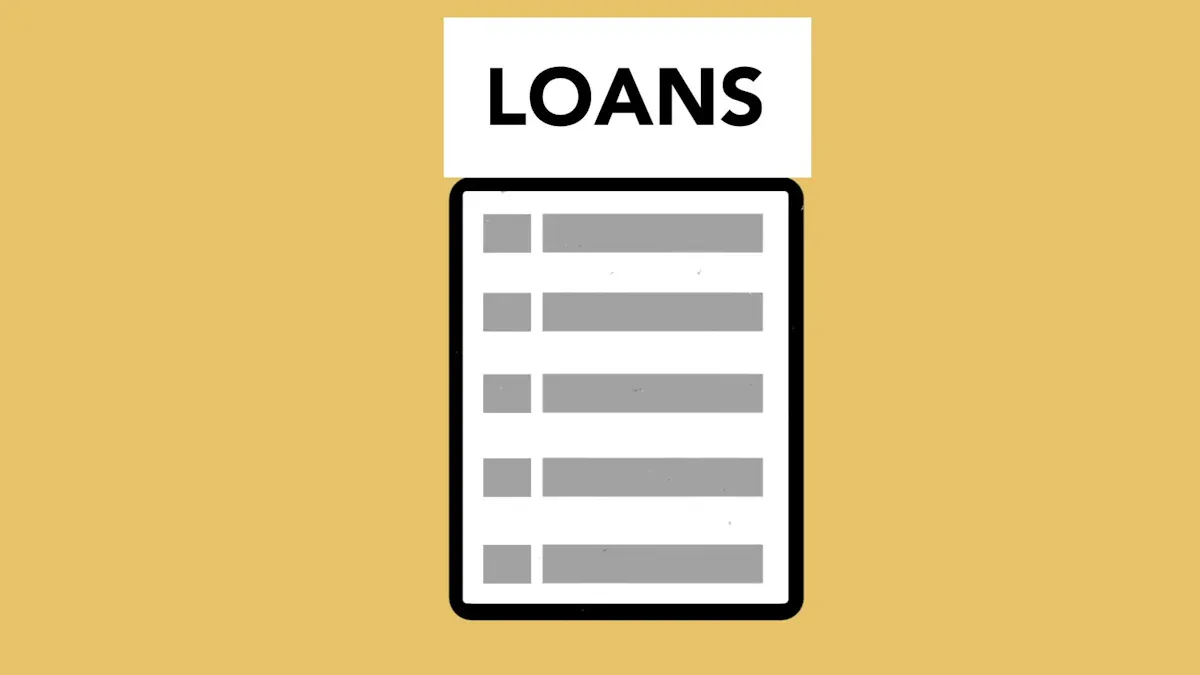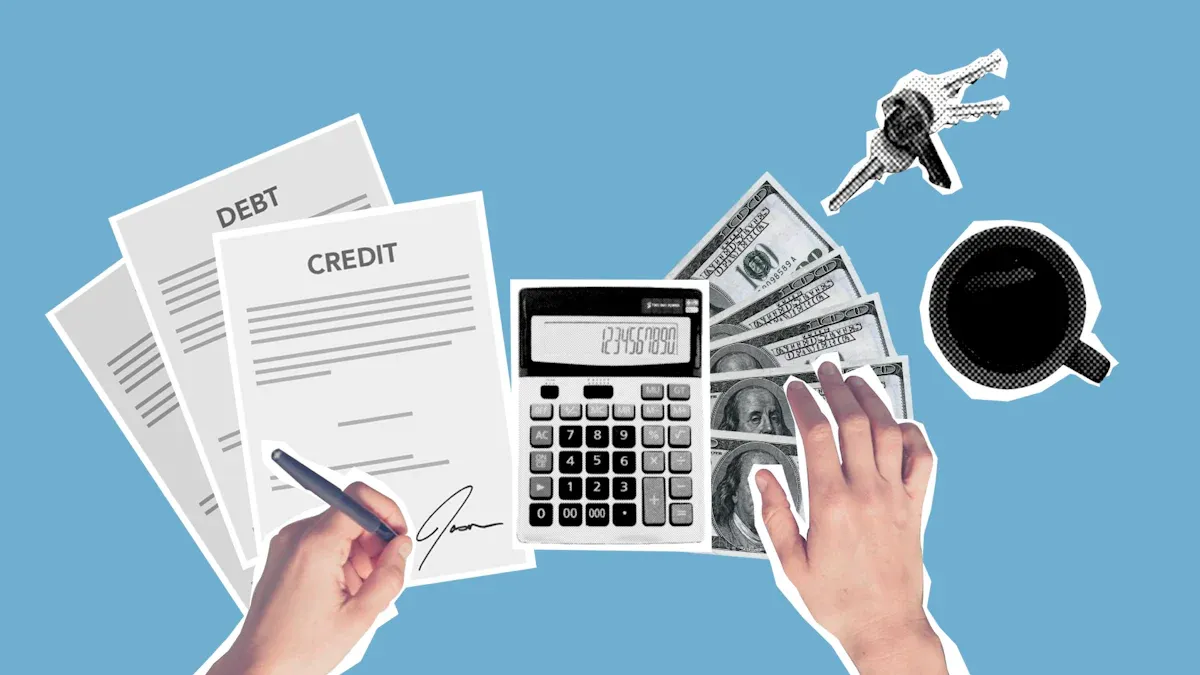Image Source: pexels
Lowering loan interest rates can significantly enhance your financial situation. High rates consume more of your money, while lower rates allow you to save for other purposes. By learning how to lower loan interest rates: credit optimization and application tips, you can secure better deals through improved credit and strategic approaches.
Lenders often provide special offers based on your credit history. This can lead to lower rates and payments, benefiting your finances and establishing trust with lenders.
Begin managing your loan terms today. Small adjustments can lead to substantial savings over time.
Key Takeaways
- Raising your credit score is very important. Always pay bills on time and keep credit card debt small to prove you are trustworthy.
- Look at loan options from many lenders. This lets you pick the best deal and save money later.
- Try balance transfers or combining debts. These can cut interest rates and make paying easier.
Understanding Loan Interest Rates
Key Factors That Influence Interest Rates
Knowing what affects loan interest rates helps you make better choices. Many things impact these rates, and understanding them can help you negotiate with lenders.
- Supply and Demand: When more people want loans, rates go up. If fewer people need loans, rates usually drop.
- Credit Risk: Lenders check your credit. Bad credit means higher rates. Good credit or secured loans often get lower rates.
- Loan Term: Longer loans have higher rates because of risks and inflation.
- Tax Considerations: Some loans, like government-backed ones, have lower rates due to tax perks and low risk.
- Convertibility: Loans that turn into cash quickly often have lower rates.
The economy also affects rates. A strong economy usually raises rates. Things like GDP, inflation, and job numbers show this. The bond market matters too. Higher bond yields mean higher loan rates, while lower yields bring lower rates.
Benefits of Lower Interest Rates for Borrowers
Getting a lower rate can improve your finances. It cuts monthly payments, so you can save or spend on other things. Borrowers can also use discount points to lower rates by paying a fee upfront.
| Aspect | Description |
|---|---|
| Discount Points | Pay a one-time fee to lower your rate and monthly payments. |
| Cost Example | Paying one point on a $400,000 loan may cut the rate by 0.25%. |
| Break-even Period | Save money if you keep the loan long enough to cover the upfront cost. |
| Borrower Considerations | If you lack cash or plan to refinance soon, points may not help. |
| Current Market Context | High rates make discount points more appealing for managing payments. |
Lower rates mean paying less over time. This saves you lots of money, especially on big loans like mortgages. By learning how to lower loan interest rates: credit optimization and application tips, you can take charge of your finances and enjoy these savings.
Credit Optimization Tips

Image Source: pexels
Steps to Improve Your Credit Score
Boosting your credit score helps you get lower loan rates. A good score shows lenders you handle money well. Start by paying bills on time. Late payments hurt your score, so set reminders or use auto-pay.
Lower your credit card balances next. Using too much of your credit limit can drop your score. Try to keep usage under 30%. If you can, pay off the full balance every month.
Also, don’t open too many new credit accounts quickly. Each application lowers your score a little. Instead, keep old accounts open and have different types, like credit cards and loans.
Managing Debt-to-Income Ratio
Your debt-to-income (DTI) ratio affects your loan chances and rates. Lenders like a DTI of 43% or less. A DTI over 50% makes you a high-risk borrower.
- Lower your DTI: Pay off debts before applying for new loans.
- Avoid extra debt: Spend only on what’s necessary and skip overspending.
- Earn more money: Take side jobs or freelance work to raise your income.
Keeping your DTI low shows lenders you’re financially stable. This can help you get better loan deals.
Checking and Correcting Credit Report Errors
Mistakes on your credit report can hurt your score and raise loan rates. Check your report often to find and fix errors. Studies show:
| Error Type | Percentage |
|---|---|
| Found at least one mistake | 44% |
| Errors in account details | 27% |
| Errors in personal information | 34% |
| Couldn’t access their reports | 25% |
| Found it hard to access reports | 11% |
If you see mistakes, report them to the credit bureau right away. Send proof to back up your claim and follow up until it’s fixed. Fixing errors can raise your score and lower your loan rates.
By using these tips, you can improve your finances. Learning how to lower loan interest rates: credit optimization and application tips helps you borrow smarter and save money.
Application Strategies for Lower Rates

Image Source: pexels
Talking to Lenders
Talking to lenders can help you get a better deal. First, improve your financial situation. A good credit score or low debt shows you’re trustworthy. This gives you an advantage when asking for lower rates.
When speaking with lenders, don’t be afraid to ask for discounts. If another lender offers a better deal, mention it. Many lenders will match or beat other offers to gain your business. You can also pay upfront fees, called discount points, to lower your rate over time.
Tip: Check with several lenders before deciding. This increases competition and helps you get the best rate.
Comparing Loans from Different Lenders
Looking at loans from different lenders helps you find the lowest rate. Use online tools to compare APRs, terms, and amounts. Checking these details won’t hurt your credit unless you apply officially.
Technology makes comparing loans fast and simple. Even small rate differences can save you a lot of money over time.
-
Why compare loans?
- Avoid hurting your credit by skipping unnecessary checks.
- Save money and time by finding the best loan quickly.
Taking time to compare loans helps you choose the best option for your needs.
Adding Co-Signers or Paying More Upfront
If your credit isn’t great, a co-signer can help. A co-signer with good credit makes lenders feel safer, so they may offer lower rates. This is helpful for people new to building credit.
Another way to lower your rate is by paying more upfront. A bigger down payment reduces the lender’s risk and can lead to better terms. It also lowers your monthly payments, making the loan easier to handle.
Note: Saving for a larger down payment takes effort, but it’s worth it in the long run.
By using these ideas, you can take charge of your borrowing. Learning how to lower loan interest rates: credit optimization and application tips helps you make smarter money choices.
Alternative Ways to Lower Interest Rates
Moving Balances to Lower-Rate Cards
If your credit card has high interest, try a balance transfer. Move your debt to a card with a lower or 0% APR. This can save you lots of money on interest. For example, transferring $5,000 from a 20% APR card to one with 0% for 20 months saves over $1,100. You could also pay off the debt faster by five months.
Tip: Choose cards without transfer fees to save even more.
This method works best if you pay off the balance during the low-rate period. It’s a great way to manage your debt and save money.
Combining Debts with One Loan
Debt consolidation loans let you combine debts into one payment. These loans often have lower interest rates, saving you money. If you have several high-interest loans, this can reduce your monthly payments.
Having good credit can help you get better loan terms. Consolidating makes managing your finances easier and lowers your interest rate.
Paying Points to Lower Mortgage Rates
Mortgage points let you pay upfront to lower your rate. This is helpful if you plan to stay in your home for years. About 90% of people refinancing their homes use points to get better rates.
Homebuyers can save a lot over the loan’s life by paying points. But it’s important to check how long it takes to break even. Make sure this fits your financial plans.
By trying these ideas, you can lower your loan rates. Learning how to lower loan interest rates: credit optimization and application tips helps you save money and make better financial choices.
Understanding how to lower loan interest rates is important. Improve your credit and use smart loan strategies to save money. Look into other options to reduce stress and costs. Small actions now can lead to a stable financial future. Begin today!
FAQ
What is the fastest way to improve my credit score?
Pay bills on time and reduce credit card balances. These actions quickly show lenders you’re financially responsible.
Can I negotiate loan interest rates with lenders?
Yes! Lenders often adjust rates if you have good credit or competing offers. Be confident and ask for better terms.
Should I always choose the lowest interest rate?
Not always. Consider loan terms, fees, and flexibility. A slightly higher rate with better conditions might save you more in the long run.
Tip: Always read the fine print before committing to a loan. Small details can make a big difference!




